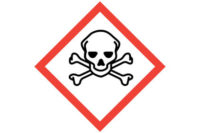UPS and Fedex workers at three different locations were potentially exposed to hazardous materials, because companies shipping toxic chemicals by air failed to comply with labeling and packaging regulations, according to the U.S. Department of Transportation’s Federal Aviation Administration (FAA).
The FAA is proposing civil penalties ranging from $57,400 to $63,000 against the companies for allegedly violating Hazardous Materials Regulations.
Leaking containers
On July 1, 2014, employees at the the UPS sorting facility in Louisville, Ky discovered that 2.5-gallon plastic containers of herbicide being shipped by Mattoon Rural King from Mattoon, Ill., to Wetonka, S.D. were leaking. Herbicides are considered to be a flammable liquid. Mattoon Rural King, which is facing a $63,000 fine, is scheduled to meet with the FAA in mid-October to discuss the case.
Workers at the UPS sort facility in Louisville, Ky., discovered that some containers of flammable Kerosene being shipped by air Hammond, La. to Olathe, Kan. were leaking. The FAA is proposing penalties of $63,000 against by the MidContinental Chemical Company Inc. of Olathe, Kan. and its subsidiary, MCC Chemical Services, LLC of Hammond La., which was also shipping flammable petroleum distillates. MidContinental is scheduled to meet with the FAA in mid-October to discuss the case.
Flammable paint
The FAA alleges that on March 25, 2014, an employee of Aeroplus Aeroplus Interiors, Inc. of Rosharon, Texas offered three undeclared packages containing metal cans of flammable JetGlo Contrail White Aircraft Paint for shipment aboard FedEx aircraft from Rosharon to Laredo, Texas. FedEx employees at the company’s sorting facility at Fort Worth Alliance Airport discovered the paint after one of the packages began leaking. Under Department of Transportation regulations, this type of paint is considered to be a hazardous material because it is flammable. Aeroplus Interiors is facing a $57,400 fine.
In each case, the FAA alleges the shipments were not accompanied by shipping papers to indicate the hazardous nature of their contents and were not marked, labeled or packed in accordance with the Hazardous Materials Regulations. The FAA also alleges the packages were not adequate for shipping, and failed to protect against a release of hazardous material into the environment under normal transportation conditions. Additionally, the FAA alleges the companies failed to provide emergency response information and ensure their employees had received required training in packaging and shipping hazardous materials.








.jpg?t=1721257160)
